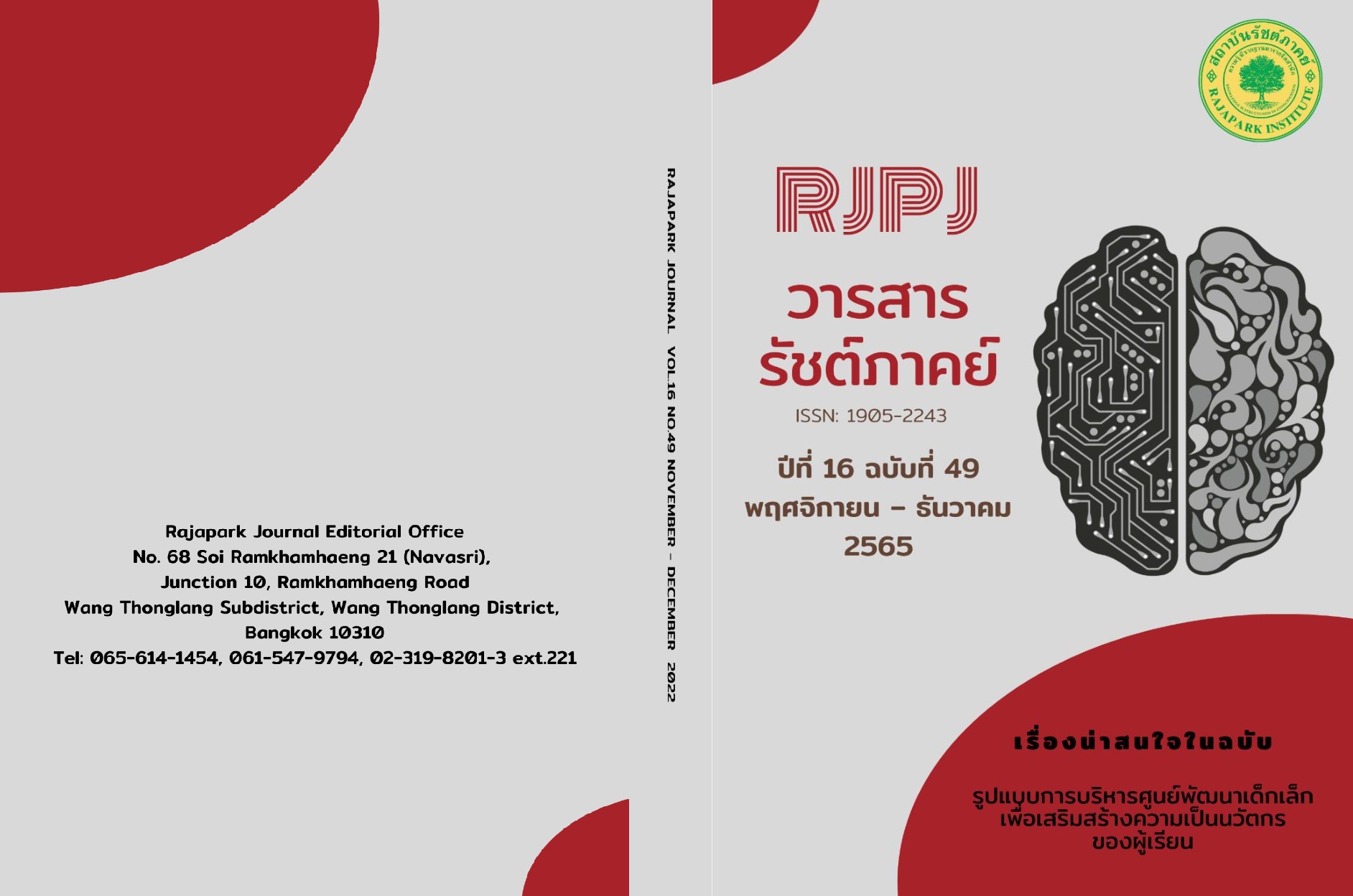A Structural Equation Model of Factors Influencing School Commitment of Teachers in Schools Under Educational Service Area Office 41
Main Article Content
Abstract
This study aimed to develop a structural equation model of factors influencing the school commitment of teachers in schools under Educational Service Area Office 41 and develop practice guidelines for enhancing factors influencing the school engagement of teachers. The multi–stage random sampling was applied to the research samples, which consisted of 450 teachers from selected schools. The research instruments for data collection, to obtain frequency, percent, mean, and standard deviation. A program was also employed to investigate the construct validity and the consistency of the hypothesis model with the empirical data. The findings of this study revealed the following: 1. The structural equation model of factors influencing the school commitment of teachers in schools that developed was consistent with the empirical data. 2. According to the influence coefficient of the factors influencing the school commitment of teachers, it was found that: 1) The direct effect consisted of three factors: job satisfaction, servant leadership, and the perception of school justice. 2) The indirect effect consisted of two factors: the servant leadership and the perception of school justices. 3) The total effect consisted of three factors and the influence coefficient.
Article Details

This work is licensed under a Creative Commons Attribution-NonCommercial-NoDerivatives 4.0 International License.
Views and opinions appearing in the Journal it is the responsibility of the author of the article, and does not constitute the view and responsibility of the editorial team.
References
Colquitt, J. A., Scott, B. A., Rodell, J. B., Long, D. M., Zapata, C. P., Conlon, D. E., & Wesson, M. J. (2013). Justice at the Millennium, a Decade Later: A Meta-Analytic Test of Social Exchange and Affect-Based Perspectives. Journal of Applied Psychology, 98(2), 199–236.
https://doi.org/10.1037/a0031757
Daft, R. L. (2002). The Leadership Experience (2nd ed). Harcourt College.
Davis, K., & Newstrom, J. W. (1989). Human Behavior at Worth Organization Psychology (8th ed). McGraw-Hill.
Dhanasana, T., & Pasunon, P. (2014). A Study of Factors that Have Effect on Commitment in Workplace of the Hard Disk Drive (HDD) Company Limited. RMUTT Global Business and Economics Review, 9(1), 94-103. https://so03.tci-thaijo.org/index.php/RMUTT-Gber/article/view/242072/164215
Greenberg, J. (1993). Employee Theft as a Reaction to Underpayment Inequity: Hidden Cost of Pay Cuts. Journal of Applied Psychology, 75, 561-568.
Hoy, W. K., & Miskel, C. G. (2001). Educational Administration: Theory Research and Practice (6th ed). McGraw-Hill.
Jitchayawanich, K. (2019). Learning management. Chulalongkorn University.
Kinicki, A. J. et al. (2002). Assessing the Construct Validity of the Job Descriptive Index a Review and Meta Analysis. Journal of Applied Psychology, 87, 14-32.
Krejcie, R.V., & Morgan, D.W. (1970). Determining Sample Size for Research Activities. Educational and Psychological Measurement, 30(3), 607 -610.
Laub, J. A. (1999). Assessing the Servant Organization: Development of the Servant Organizational Leadership Assessment Instrument[Doctoral Dissertation, Florida Atlantic University].
Meyer, J. P., & Allen, N. J. (1997). Organizational Commitment: Evidence of Career Stage Effect. Journal of Business Research, 26, 49-61.
Mitkul S., & Kongchan A. (2016). Generation Y in Organizations: Education, Relationships Between The Consistency of Values and the Commitment to the Organization. Journal of Management Science, 33(1), 51-75.
Muchinsky, P. M. (2003). Psychology Applied to Work (7th ed). Wadsworth/Thomson Learning.
Sawamiwathsoogij, N. (2016). A Study of the Relationship Among Supervisors and Team Members, Organizational Atmosphere and Job Motivation Toward Expectation Retaining Talent Operational Employees in the Organization[Master’s Thesis, Bangkok University]. http://dspace.bu.ac.th/jspui/bitstream/123456789/1913/1/nantthanada_sawa.pdf
Sheppard, B.H., Lewicki, R.J., & Minton, J. W. (1992). Organizational Justice: The Search for Fairness in the Workplace. Macmillan.
Singer, M.G. (1990). Human Resource Management. PWS-KENT.
Suangkawathin, S. (2017, March 8). Active Learning Prototype Area. Daily Matichon Newspaper.


